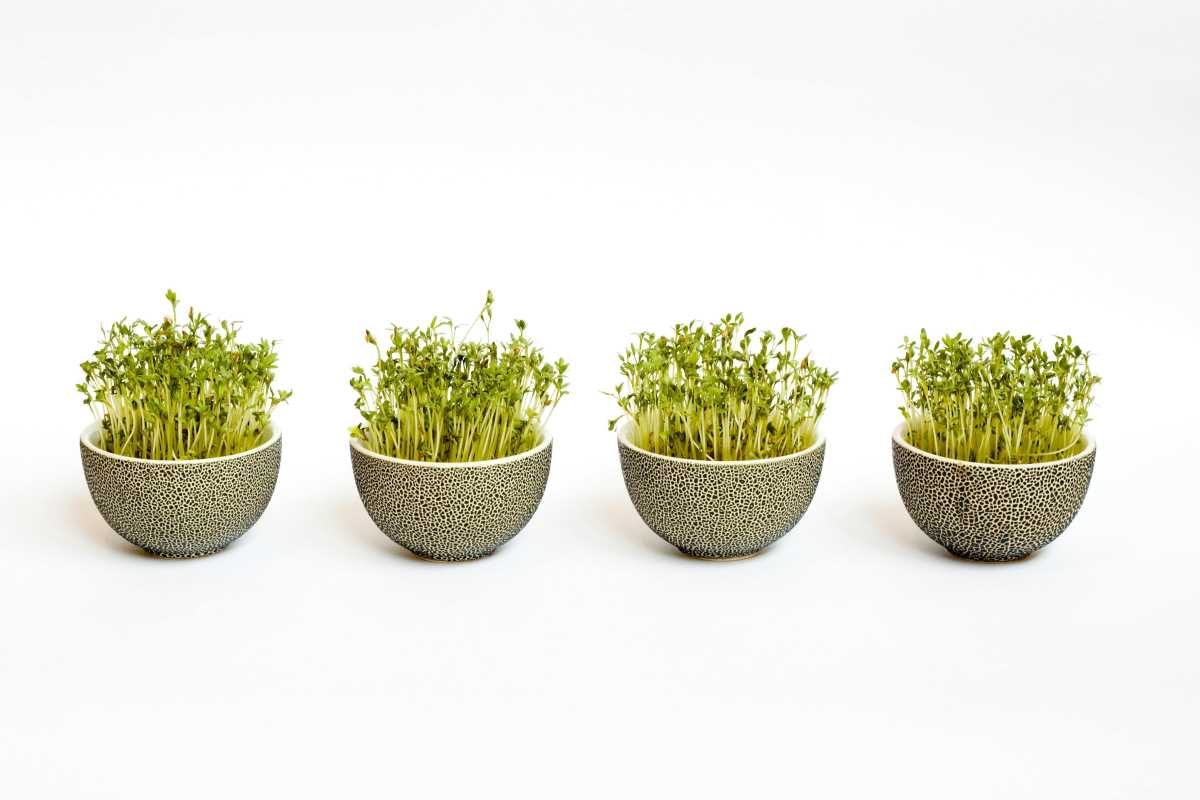Microgreens may be small, but they offer an incredible nutritional boost. These tiny greens, harvested shortly after their first true leaves appear, are packed with essential vitamins, minerals, and antioxidants. By cultivating microgreens on an edible lawn, you can elevate the nutritional value of your meals while embracing a more sustainable lifestyle. This practice requires minimal water and space, making it an eco-friendly choice that contributes to a healthier diet and a more sustainable way of living. Enjoy the benefits of these vibrant greens and the positive impact they bring to your life and the environment.
Benefits of Microgreens
- High Nutritional Value: Microgreens contain up to 40 times more nutrients than their mature counterparts, offering an abundance of vitamins A, C, and E, as well as essential minerals like iron and potassium.
- Eco-Friendly: Growing microgreens requires less space and water compared to traditional gardening, reducing your overall ecological footprint.
- Quick Harvest: These greens can get harvested in just 1-3 weeks, allowing for multiple cycles of growth throughout the year.
- Pest Resistant: Microgreens resist pests and diseases, minimizing the need for chemical interventions.
Incorporating microgreens into your diet boosts your health and supports sustainable agricultural practices that benefit the environment. For instance, studies show that microgreens can significantly reduce the carbon footprint associated with large-scale farming.
Choosing the Right Microgreens for Your Lawn
Selecting the appropriate varieties of microgreens is crucial for a successful edible lawn. Popular options include sunflower, radish, pea shoots, and basil. Each type offers unique flavors and nutritional profiles, allowing you to customize your garden based on personal preferences and culinary needs.
When you choose seeds, consider your local climate and the specific conditions of your planting area. For warmer regions, heat-tolerant varieties like basil thrive, while cooler climates are ideal for microgreens like kale and arugula. Opting for organic and non-GMO seeds ensures that your microgreens remain free from harmful chemicals and genetically modified organisms.
Setting Up Your Edible Lawn
Changing your lawn into a microgreen garden involves a few simple steps:
- Soil Preparation: Start by loosening the soil to create a fine texture, which facilitates seed germination and root growth. Incorporate compost or organic matter to enhance soil fertility.
- Seed Sowing: Evenly distribute the microgreen seeds across the prepared soil. For optimal growth, aim for a dense but not overcrowded planting.
- Watering: Gently water the seeds to keep the soil consistently moist. Using a drip irrigation system helps maintain steady moisture levels with minimal water usage.
- Sunlight Exposure: Position your edible lawn in an area that receives ample sunlight, ideally 4-6 hours per day, to support healthy growth.
By following these steps, you can establish a lush and productive edible lawn that serves as a sustainable source of nutrient-rich microgreens for your kitchen.
Water Conservation Techniques
- Drip Irrigation: Use a drip irrigation system to deliver water directly to the plant roots, minimizing evaporation and runoff.
- Mulching: Apply a layer of organic mulch to retain soil moisture and reduce the need for frequent watering.
- Rainwater Harvesting: Collect and store rainwater to use for irrigation, decreasing dependence on municipal water sources.
- Efficient Scheduling: Water your microgreens during the early morning or late evening to reduce water loss due to evaporation.
Implementing these water-saving methods conserves precious resources and ensures that your microgreens receive the optimal amount of hydration for robust growth. Efficient watering practices remain essential for maintaining a sustainable and low-maintenance edible lawn.
Maintaining and Harvesting Microgreens
Proper maintenance is key to ensuring the health and productivity of your microgreen garden. Regularly inspect your plants for signs of pests or disease, and remove any affected areas promptly to prevent spread. Ensure that your microgreens receive adequate light and are not overcrowded, as this can hinder growth and reduce yields.
When it's time to harvest, use a sharp pair of scissors or a knife to cut the microgreens just above the soil line. This method preserves the integrity of the plant and allows for a clean, fresh addition to your meals. For continued yields, practice successive planting by sowing new seeds every few weeks. By following these simple steps, you can enjoy a continuous supply of nutrition-rich microgreens throughout the year.
Embarking on microgreen gardening boosts your culinary skills and supports sustainability, fostering environmental stewardship and personal well-being.
 (Image via
(Image via





